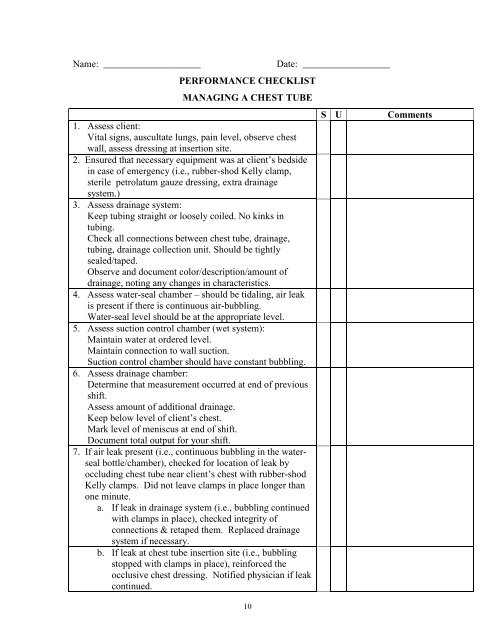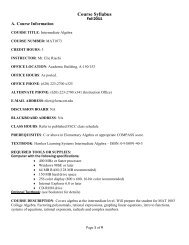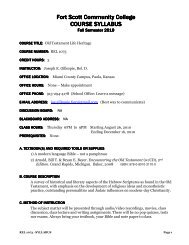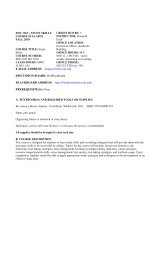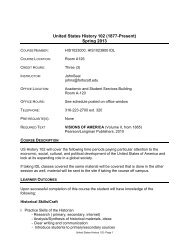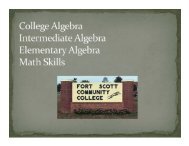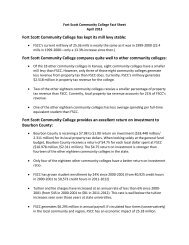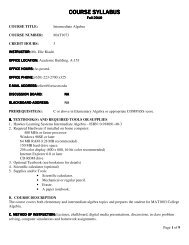laboratory and clinical booklet - Fort Scott Community College
laboratory and clinical booklet - Fort Scott Community College
laboratory and clinical booklet - Fort Scott Community College
You also want an ePaper? Increase the reach of your titles
YUMPU automatically turns print PDFs into web optimized ePapers that Google loves.
Name: ____________________<br />
PERFORMANCE CHECKLIST<br />
MANAGING A CHEST TUBE<br />
1. Assess client:<br />
Vital signs, auscultate lungs, pain level, observe chest<br />
wall, assess dressing at insertion site.<br />
2. Ensured that necessary equipment was at client‟s bedside<br />
in case of emergency (i.e., rubber-shod Kelly clamp,<br />
sterile petrolatum gauze dressing, extra drainage<br />
system.)<br />
3. Assess drainage system:<br />
Keep tubing straight or loosely coiled. No kinks in<br />
tubing.<br />
Check all connections between chest tube, drainage,<br />
tubing, drainage collection unit. Should be tightly<br />
sealed/taped.<br />
Observe <strong>and</strong> document color/description/amount of<br />
drainage, noting any changes in characteristics.<br />
4. Assess water-seal chamber – should be tidaling, air leak<br />
is present if there is continuous air-bubbling.<br />
Water-seal level should be at the appropriate level.<br />
5. Assess suction control chamber (wet system):<br />
Maintain water at ordered level.<br />
Maintain connection to wall suction.<br />
Suction control chamber should have constant bubbling.<br />
6. Assess drainage chamber:<br />
Determine that measurement occurred at end of previous<br />
shift.<br />
Assess amount of additional drainage.<br />
Keep below level of client‟s chest.<br />
Mark level of meniscus at end of shift.<br />
Document total output for your shift.<br />
7. If air leak present (i.e., continuous bubbling in the waterseal<br />
bottle/chamber), checked for location of leak by<br />
occluding chest tube near client‟s chest with rubber-shod<br />
Kelly clamps. Did not leave clamps in place longer than<br />
one minute.<br />
a. If leak in drainage system (i.e., bubbling continued<br />
with clamps in place), checked integrity of<br />
connections & retaped them. Replaced drainage<br />
system if necessary.<br />
b. If leak at chest tube insertion site (i.e., bubbling<br />
stopped with clamps in place), reinforced the<br />
occlusive chest dressing. Notified physician if leak<br />
continued.<br />
10<br />
Date: __________________<br />
S U<br />
Comments


